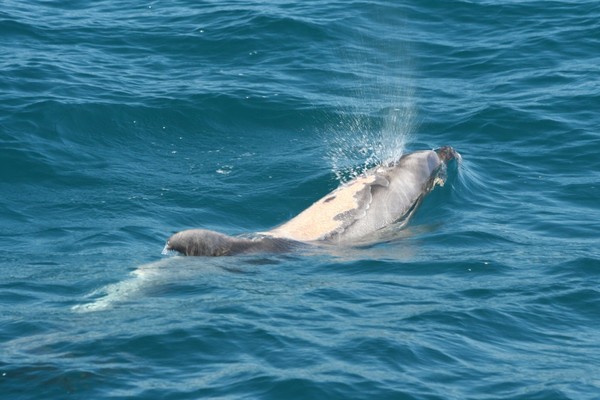Marine Photographers Spot Sun Burnt Dolphin
Wednesday 3 December 2008, 4:17PM
By Gemini Galaxsea
1,201 views
A dolphin with severe skin damage was among the four pods of common and bottlenose dolphins seen on a recent photography voyage off the Bay of Plenty Coast lead by National Geographic photographer Kim Westerskov on board the Gemini Galaxsea.
The badly scarred dolphin is possibly the victim of a stranding where it has dried out and been burnt before either being helped to get back in the water or refloating itself.
Gemini Galaxsea Skipper Graeme Butler of Butler’s Swim With Dolphins says this is why it is essential to keep the skin wet if a stranded dolphin or whale is encountered.
“The extent of the sun damage will only become apparent after the animal has been in the water for some time after the exposure and the damaged skin peels off.
“It could become infected threatening the animal’s life, but in any circumstance such damage would cause pain and stress,” he says.
Dolphins are not the only marine life to be concerned about at this time of the year when there is an invasion of holiday-makers to the Bay of Plenty. Butler says there are also a lot of seals about.
“We regularly see seals on our swim with dolphins trips and they are quite often located around the base track of Mount Maunganui/Mauao and Leisure Island. Usually the best thing is to enjoy the spectacle and leave the animals alone.”
He says if a seal appears distressed, check to see that it is not entangled by plastic or rope of any kind. If there is no obvious cause for the distress, the likelihood is they will need to rest undisturbed, so people should remain a good safe distance away, move slowly and keep the noise levels down.
People should never climb on to rocks where seals are present because they can be very territorial and don’t take kindly to people or other seals that threaten to dislodge them from their spot.
Seals are a different matter in the water however, and seem to respect the shared environment.
“So if a seal is encountered when you are swimming, make sure you don’t make any threatening moves or attempt to chase it. They are inquisitive and fun to see underwater.”
Butler is able to offer advice when marine life is in distress or injured. Another option is to contact the Department of Conservation hotline.
